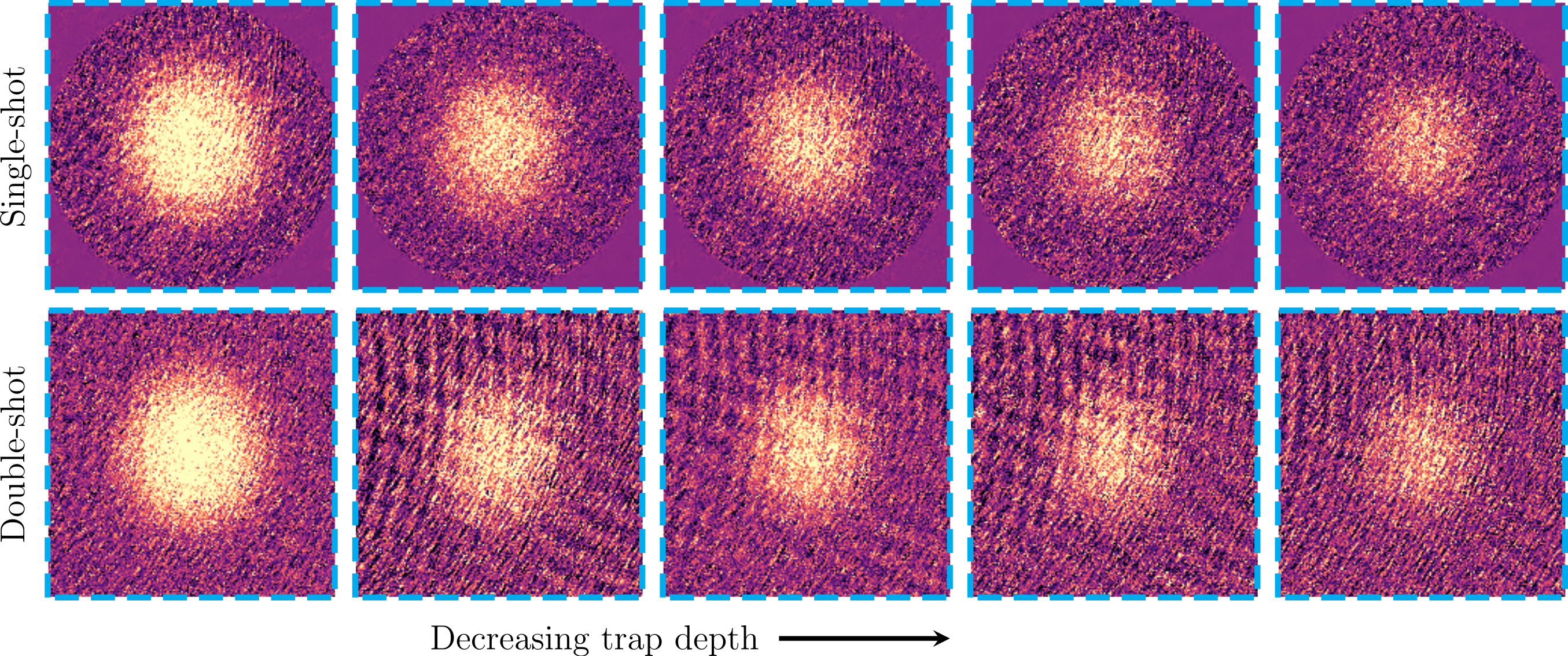Single-exposure absorption imaging of ultracold atoms using deep learning
Absorption imaging is the most common probing technique in experiments with ultracold atoms. The standard procedure involves the division of two frames acquired at successive exposures, one with the atomic absorption signal and one without. A well-known problem is the presence of residual structured noise in the final image, due to small differences between the imaging light in the two exposures. Here we solve this problem by performing absorption imaging with only a single exposure, where instead of a second exposure the reference frame is generated by an unsupervised image-completion autoencoder neural network. The network is trained on images without absorption signal such that it can infer the noise overlaying the atomic signal based only on the information in the region encircling the signal. We demonstrate our approach on data captured with a quantum degenerate Fermi gas. The average residual noise in the resulting images is below that of the standard double-shot technique. Our method simplifies the experimental sequence, reduces the hardware requirements, and can improve the accuracy of extracted physical observables. The trained network and its generating scripts are available as an open-source repository (http://absDL.github.io/).
PDF AbstractDatasets
Results from the Paper
| Task | Dataset | Model | Metric Name | Metric Value | Global Rank | Benchmark |
|---|---|---|---|---|---|---|
| Image Denoising | ultracold fermions Technion system, pixelfly | absDL | ODRMSE | 0.0711 | # 1 |




